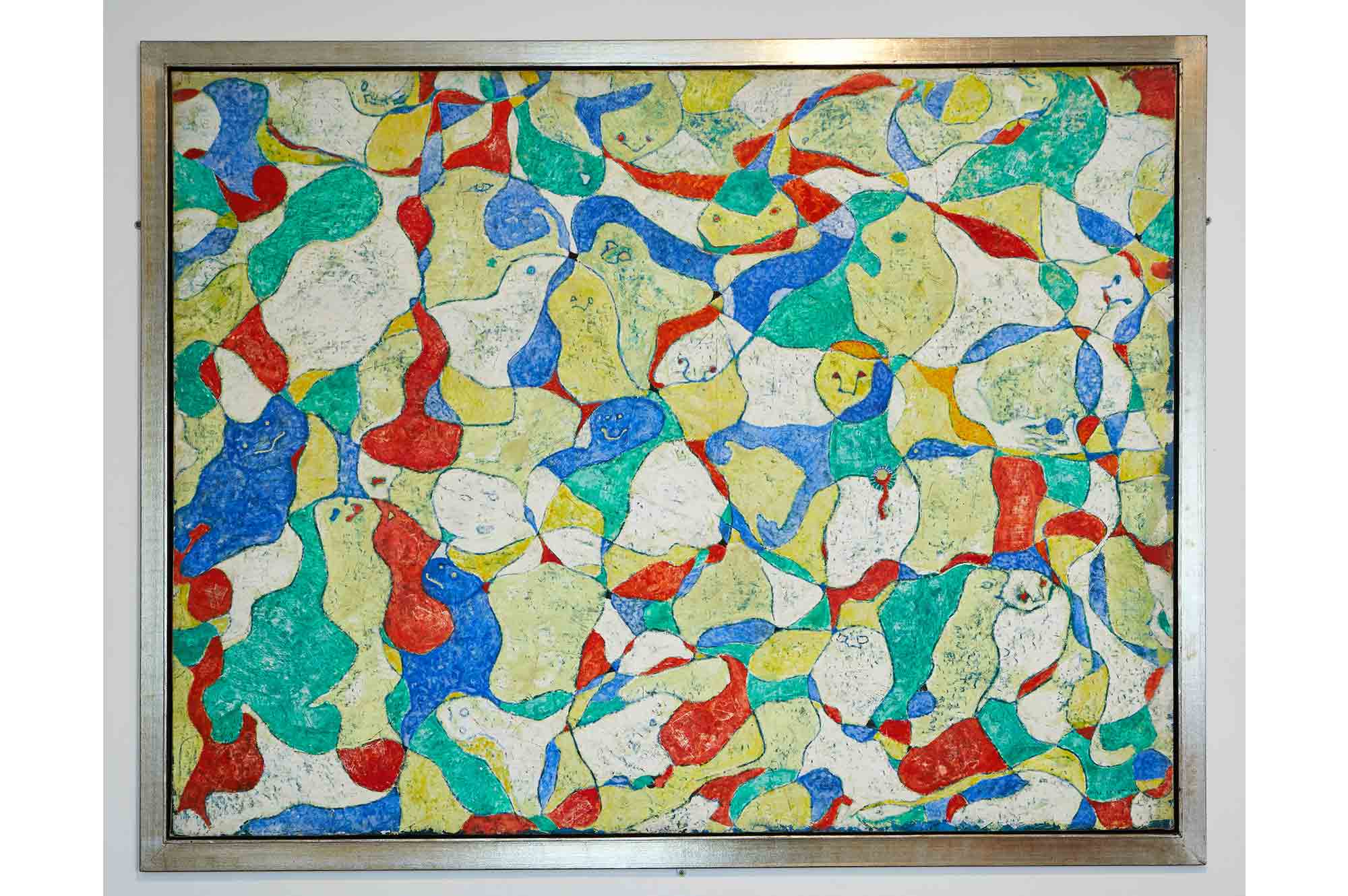In the course of his rather liberal studies of philosophy and psychology, Max Ernst (1891-1976, DE/FR) absorbed the spirit of the German Romantics, became interested in the artwork of the mentally ill and, through his friendship with August Macke, discovered the beginnings of Expressionism that influenced his early works. His bond with Arp and the provocations of the Dada group in Cologne, which they founded together with Baargeld, enabled him to overcome the shock of the war and define a new style, combining the influence of De Chirico with the surprises offered by collage to achieve ‘the fortuitous encounter upon a nonsuitable plane of two mutually distant realities’. At Breton’s invitation, he presented his works at the Au sans Pareil gallery in May 1921, making an essential contribution to the burgeoning Surrealist movement; despite all the disagreements and excommunications, he would remain one of its greatest and most faithful witnesses.
Utilised across all mediums, the techniques of collage, frottage – from 1925 onwards – and then grattage and decalcomania enabled him to create a hallucinatory oeuvre of extraordinary diversity. It explores the unconscious of a deliberately detached observer and renders it tangible, the ‘superior of birds’, through the interpretation of chance in the juxtaposition of incongruous images and analogical associations. From the end of the 1920s, the painter is thus the visionary and prophetic interpreter of a world threatened by decomposition, devoured by strange biomorphic proliferations. The war caught him by surprise in Saint-Martin-d’Ardèche, where he had settled in 1938 with Leonora Carrington, and he passed through several French internment camps (in Les Milles with Bellmer, for example), surviving thanks to the help of Joë Bousquet, before meeting André Breton and the Surrealists who had settled in Marseille between 1940 and 1941. With the help of the lawyer Gaston Defferre, Varian Fry and Peggy Guggenheim, he was able to move to the United States, where he was to have a defining influence on the new generation of painters. Invited for an exhibition at Galerie D. René in Paris in 1945, thanks to Paul Éluard, Max Ernst returned to France in 1949, moved to Huismes near Chinon in 1955 and then to Seillans in 1964.
In 1927, Ernst used strings to create chance effects in the frottage of some of his best paintings (The Horde). But he would retain nothing of their hallucinatory character when he returned to this technique almost forty years later, following his move to Seillans in the Haut-Var with Dorothea Tanning. This time, the unexpected delineations reveal neither the celestial murmur of 100,000 Doves (1925, private collection) nor the romantic visions of the The Eye of Silence (1943, Musée de Saint-Louis), but rather the amused fantasy of the French edition of Lewis Carroll’s Symbolic Logic, titled Logique sans peine, which he illustrated in 1966. A vividly coloured festive painting, a Provençal village festival and a celebration of a new life begun in the light of the south; it could be reminiscent of Dubuffet’s Hourloupe puzzles from the same period, but it is in fact far removed from them due to an ambiguous interruption of a joyful population of bird-headed gnomes. While this painting is certainly isolated in his oeuvre (along with its counterpart, A Swallow’s Nest, 1966), La Fête à Seillans was dearly cherished by the artist, who posed with it on several occasions (Quinn, 1976), willingly asserting at the time that ‘celebration is as revolutionary as provocation’.
Max Ernst , La fête à Seillans, 1964
Oil painting
Gifted in 1982
Centre Pompidou, Paris, Musée national d’art moderne — Centre de création industrielle
On deposit at Musée Cantini, Marseille
When the Second World War broke out in September 1939, the Surrealist Max Ernst was arrested as an enemy alien and interned in the Camp des Milles near Aix-en-Provence. He was released shortly thereafter, but would soon be arrested again by the Gestapo following the German occupation of France and was forced to flee to the US in 1941. Nonetheless, Ernst would return to France in the 1950s and eventually settle in Seillans during the 1960s and 70s. The painting La fête à Seillans (1964) is a carefully composed celebration of colour, while its enigmatic forms suggest a mass of pulsating joyful celebration of interconnected bodies via lurking faces, open mouths and nipple play. In the Manifesto of Surrealism it also reads ‘Sade is surrealist in sadism.’ Ernst himself was particularly fond of the painting as he often posed in photographs in front of it. At the time, he asserted also that ‘celebration is as revolutionary as provocation.’









 La fête à Seillans, 1964, Max Ernst © Centre Pompidou, Paris, Musée national d’art moderne — Centre de création industrielle. Photo ©Jeanchristophe Lett /Manifesta 13 Marseille
La fête à Seillans, 1964, Max Ernst © Centre Pompidou, Paris, Musée national d’art moderne — Centre de création industrielle. Photo ©Jeanchristophe Lett /Manifesta 13 Marseille